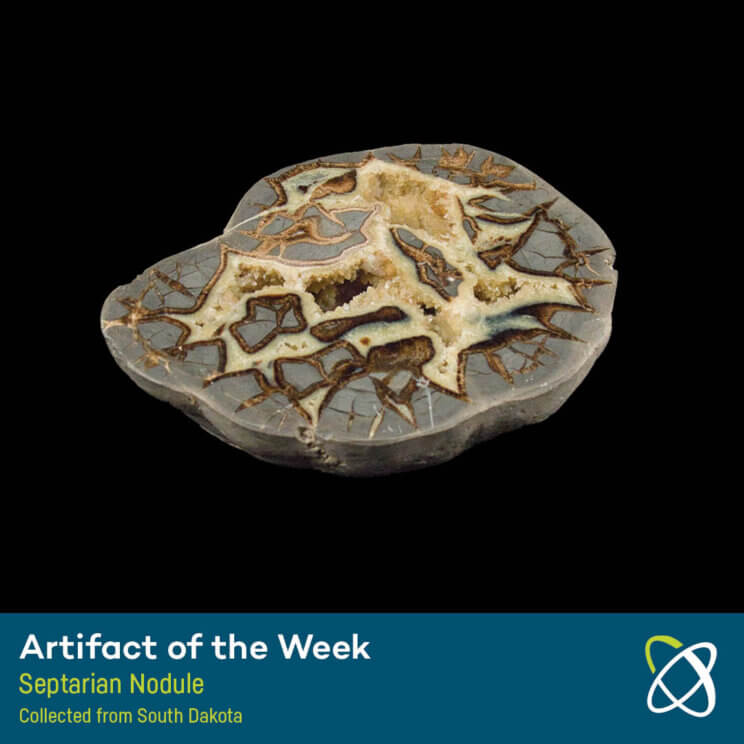Septarian Nodule – Collected from South Dakota
That sure is a pretty prehistoric mud bubble! Called a septarian nodule, this is a fossilized mud bubble formed between 50 and 70 million years ago composed of calcite, aragonite, and a limestone coating. These three minerals form together in a pocket of air creating a sedimentary rock concretion with a crystal surprise inside.

The word septarian comes from the Latin word ‘septum’ meaning a dividing partition between two tissues or cavities. You may connect the word septum to your nose, and you’d be right! In anatomy, the septum is the cartilage separating the two nostrils of our nose. In this case, the word septarian refers to the interior distinctive angular cavities or cracks separating the two halves of the nodule.
Despite being pretty commonly found concretions, these specimens are considered geological curiosities. This is due to the fact that they can form in many unusual shapes, sizes, and compositions, with varying patterns found inside.
See more Artifacts of the Week
Artifact of the Month Video Series
Connect with curiosity!










